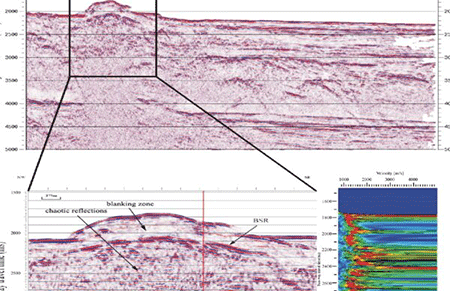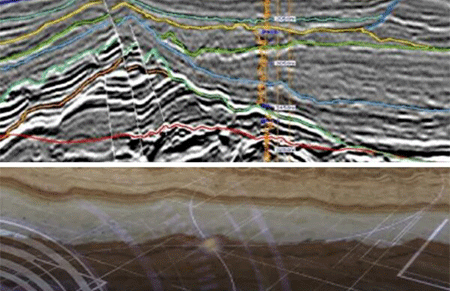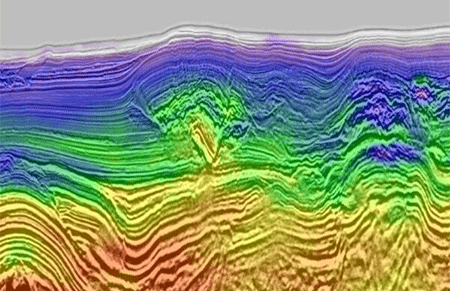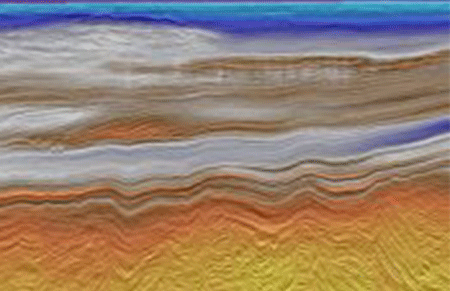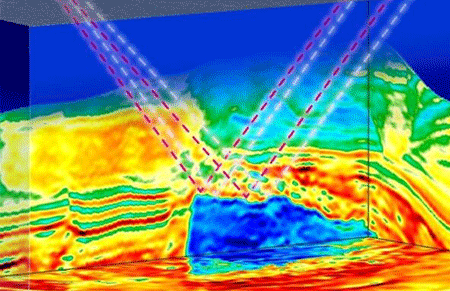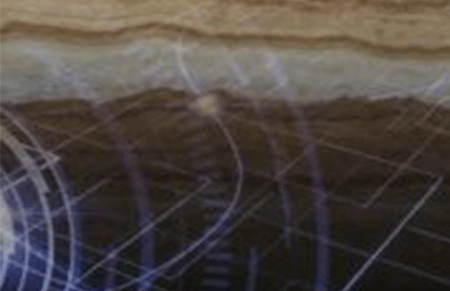Seismic Data Processing
Application-specific seismic data conditioning and processing for confident imaging:
From the field to the final volume, seismic data goes through many processes and workflows. Data conditioning encompasses a wide range of technologies designed to address numerous challenges in the processing sequence—from data calibration and regularization to noise and multiple attenuation and signal enhancement.
Each prestack process and subsequent imaging algorithm must be carefully selected to match your goals and expertly applied.
Each step will affect the fidelity of the final images and, ultimately, your confidence in the results.
Whether you have 2D or 3D data, our algorithms can extend the usable bandwidth of both legacy and new seismic datasets.
This applies to data of any marine acquisition type or technique, including ocean bottom seismic (OBS), multicomponent,
and over-under surveys.
Our research and development professionals are continually developing new technology and workflows for seismic imaging,
as well as enhancing existing ones.
We have the technology, expertise and resources to exceed the highest geophysical processing objectives powered by our proprietary
Imaging software.
Onshore Processing 2D/3D/4D
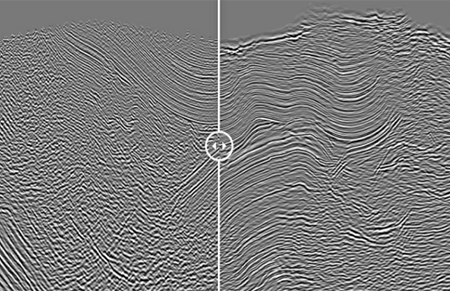
Land seismic data processing techniques are divided into two distinct approaches, stratigraphic and structural, and require varying techniques and experience in order to reach the ultimate goal of creating the best image possible.
Absolute Imaging specializes in AVO processing and has written proprietary algorithms to ensure data is amplitude friendly for additional inversion and reservoir characterization work
Offshore Processing 2D/3D/4D
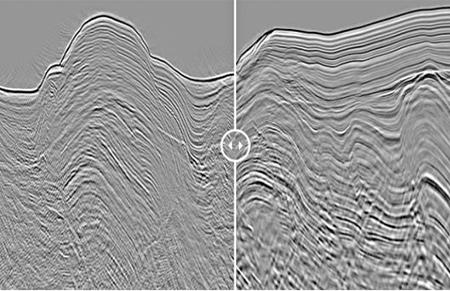
We have advanced marine processing tools and the expertise to deal with the complex marine imaging environment, which ranges from shallow to deep waters.
This includes our ability to match the phase, amplitude and static of various acquisition regimes,
including Transition Zones (TZ).
To tackle different types of multiples we have developed advanced multiple suppression technologies including MWD, SRME, IME and HRRT.
We also have a variety of noise suppression techniques available to deal with linear, swell, erratic and random noise.
To broaden the bandwidth and enhance the interpretability, we have implemented our proprietary shot and receiver de-ghosting techniques in our marine processing.
To aid in proper imaging of the geologic target in either Time or Depth, we have accurate Velocity Analysis and advanced APSTM and APSDM imaging technologies with various migrators such as Kirchhoff, Advanced BEAM, WEM & RTM.
All of the above technologies are available for towed streamer and OBN/OBC data.
Multicomponent Processing
Unconventional tools and a careful, thoughtful approach to processing are needed to
successfully produce interpretable multi-component products.
Absolute Imaging has developed the specialized algorithms and expertise to effectively process these unique
datasets.
- Polarization filtering, and other specialized pre-stack noise suppression techniques
- Field orientation analysis and vertical orientation rotation
- Horizontal rotation to radial/transverse or P-S1/P-S2 orientation
- Solving the shear wave receiver statics problem
- Multicomponent moveout – Slotboom NMO
- A layer stripping approach to shear-wave splitting estimation and compensation
- Common Conversion Point (CCP) binning
- Multicomponent post and pre-stack time migration


